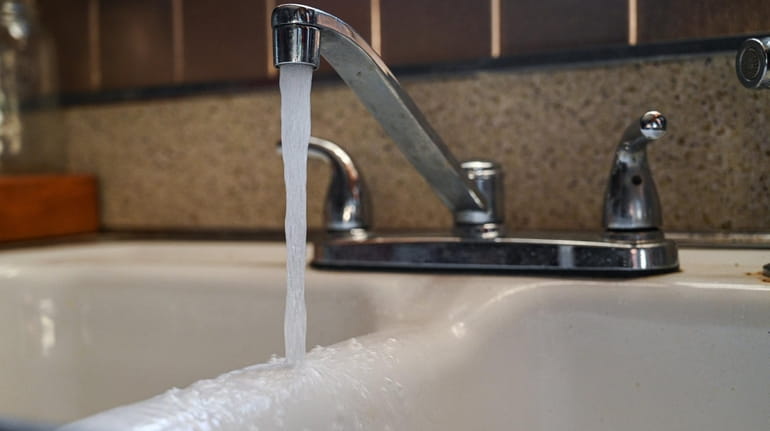Protecting LI's drinking water

The state's new tough standards on drinking water are welcome. Credit: Newsday/Steve Pfost
The state’s recent adoption of tough new drinking water standards for three emerging contaminants, though too long in the making, is welcome news, especially given the shameful inaction of the federal Environmental Protection Agency on water quality matters.
The state limit of 1 part per billion for 1,4-dioxane is the first standard in the nation for the likely carcinogen, and the 10 parts per trillion limit for the possible carcinogens perfluorooctane sulfonate (PFOS) and perfluorooctanoic acid (PFOA) is one of the toughest restrictions among the several states that have set limits. The standards are especially important for Long Island, which has dozens of wells with high concentrations of at least one of those substances.
These are the first chemicals to be newly regulated by the state since 2000. Given the rising number of unregulated emerging contaminants, it can’t take another 20 years before the next action. And now that water districts will be testing for these contaminants, the state should collect that data and publish it on a website that is easily accessible; the public has a right to know what’s in the water it’s drinking.
Now the focus shifts to actually cleaning the water, and that will be costly. Advanced oxidation systems to treat 1,4-dioxane must be individually designed and can cost up to $4 million per well, which the state has been helping offset with grants from a portion of the $3 billion set aside in recent state budgets for clean water initiatives, including cleanups. That must continue. Districts also can, and should, sue polluters to recover costs, a process made easier by legislation sponsored by State Sen. Jim Gaughran and signed last year by Gov. Andrew M. Cuomo. PFOS and PFOA are treated with regular carbon filters, which cost around $750,000 to $900,000, still pricey but easily installed, readily available and already in place on many wells. Those costs could be borne by the districts.
But everything about this situation, logically and logistically, cries out for the creation of a regional water authority. One authority would be able to engineer these cleanups more efficiently and more cheaply than the dozens of small districts that provide drinking water in Nassau County, in particular. A regional water authority can get economies of scale not available to these fiefdoms, spread the cost of an expensive system over the entire district, more easily move water around when one well needs to be shut down for treatment, cut down on expensive administrative overhead, and hire professionals like chemists and water geologists as is done at the Suffolk County Water Authority.
What’s more, it defies common sense to split the management of a single shared resource, our precious aquifer, among dozens of smaller entities. That’s true not only for this problem, but also for others like saltwater intrusion and conservation of water in times of drought.
There is a better way to deliver water — cleanly, economically and efficiently. Let’s seize this opportunity.
— The editorial board
